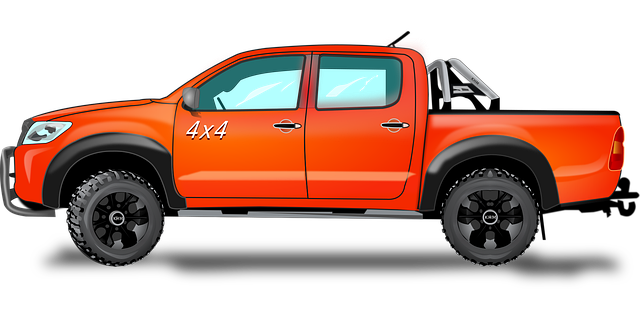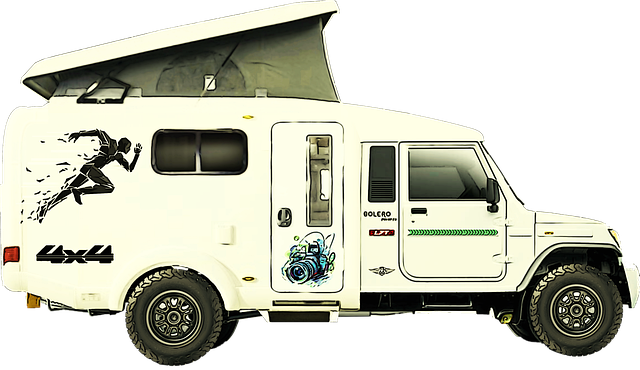Recovery lines and the RGV Overland 4×4-repair system are crucial for off-road adventures. Planning recovery zones beforehand enhances safety during remote exploration. The specialized repair system offers a comprehensive set of tools for efficient vehicle maintenance in challenging terrains. To install recovery lines on your RGV, park on a level surface, remove wheels if needed, fasten the lines to hub capsules using provided hardware, test tension, and reinstall wheels. Regular inspections are vital to maintain optimal performance, checking for wear, damage, leaks, and battery health. Keep a manual and replacement parts handy for troubleshooting.
Struggling with 4×4 repairs? Discover the power of recovery lines – a game-changing technique for RGV Overland 4×4 systems. This comprehensive guide covers everything from understanding these vital components to installation and maintenance tips. Learn when and why you need them, and master the step-by-step process for optimal performance. Enhance your off-road adventures with this essential knowledge.
- Understanding Recovery Lines: A Vital 4×4 Repair Technique
- The RGV Overland 4×4 System: An Overview
- When and Why You Need Recovery Lines
- Installation Process: Step-by-Step Guide
- Maintenance and Troubleshooting Tips for Optimal Performance
Understanding Recovery Lines: A Vital 4×4 Repair Technique

Understanding Recovery Lines: A Vital RGV Overland 4×4-Repair Technique
Recovery lines are a critical skill in off-road adventures and essential for any serious 4×4 enthusiast. This technique involves strategically placing recovery points along your route, ensuring you’re prepared for unforeseen circumstances such as getting stuck in challenging terrain. By implementing recovery lines, you gain the confidence to explore remote areas, knowing that effective rescue measures are in place.
When planning a long-distance overland trip, identifying potential recovery zones is paramount. It allows for efficient and safe extraction of your vehicle if it encounters obstacles or becomes immobilized. RGV (Recovery Group Vehicle) drivers often utilize specialized equipment and tools to create these lines, ensuring they can swiftly respond to emergencies and minimize damage during the rescue process.
The RGV Overland 4×4 System: An Overview

The RGV Overland 4×4 System is a specialized repair solution designed for robust off-road vehicles. This system caters to the unique demands of extreme terrain, offering a comprehensive set of tools and parts tailored for efficient and effective 4×4 repairs. By utilizing advanced engineering and durable materials, the RGV Overland 4×4 System ensures reliability in the most challenging conditions.
Its key features include easy-to-use components that streamline repair processes, reducing downtime for vehicles. The system’s modular design allows for quick replacement of worn-out parts, enhancing overall performance. Whether tackling a broken axle or repairing a damaged suspension, the RGV Overland 4×4 System provides the necessary equipment to get vehicles back on the trail promptly.
When and Why You Need Recovery Lines

Installation Process: Step-by-Step Guide

To install recovery lines, follow these step-by-step instructions tailored for RGV Overland 4×4 repairs:
1. Preparation: Ensure your vehicle is parked on a level surface and apply the parking brake. Gather all necessary tools and materials, including replacement recovery lines, a jack, and wheel chocks.
2. Remove Wheels (if needed): Depending on your vehicle model, you may need to remove one or more wheels to access the hubs where you’ll attach the recovery lines. Use a jack to safely lift and support the vehicle, then employ wheel chocks for added security.
3. Identify Hub Locations: Locate the hub capsules where the recovery lines will be attached. These are typically found near the wheels and may require removal of hub covers or other components to access.
4. Attach Recovery Lines: Unroll and position the new recovery lines accurately, aligning them with the hub locations. Securely fasten one end of each line to the respective hub using the provided hardware (bolts, nuts, etc.). Ensure tight connections for reliable performance.
5. Testing and Adjustments: Once all lines are installed, test their tension and stability. Make any necessary adjustments to ensure they’re securely fastened and ready for use in emergency situations.
6. Re-install Wheels: After confirming the recovery lines’ integrity, carefully lower the vehicle back to the ground, remove wheel chocks, and reinstall the wheels.
Maintenance and Troubleshooting Tips for Optimal Performance

To maintain and troubleshoot your RGV Overland 4×4-repair systems for optimal performance, start with a regular inspection routine. Visually inspect all components for any signs of wear, damage, or loose connections, addressing these issues promptly to prevent further complications. Keep an eye on fluid levels, ensuring they are at the recommended marks, and check for any leaks which could indicate faulty seals or gaskets. Regularly test batteries and replace any old or damaged cells to maintain consistent power delivery.
For troubleshooting, start with basic checks like ensuring all wires are securely connected and that there’s adequate fuel supply. If systems aren’t functioning as expected, consult the manufacturer’s manual for specific diagnostic steps. Keep a kit of common replacement parts on hand for quick fixes, and don’t hesitate to seek professional assistance if issues persist, especially when dealing with complex components like engines or transmissions.
Understanding the importance of recovery lines in 4×4 repairs, especially with the robust RGV Overland system, can significantly enhance your off-road capabilities. By following the step-by-step installation guide and implementing proper maintenance, you ensure optimal performance when facing challenging terrains. Remember that these simple yet effective tools can be a game-changer during overland adventures.



